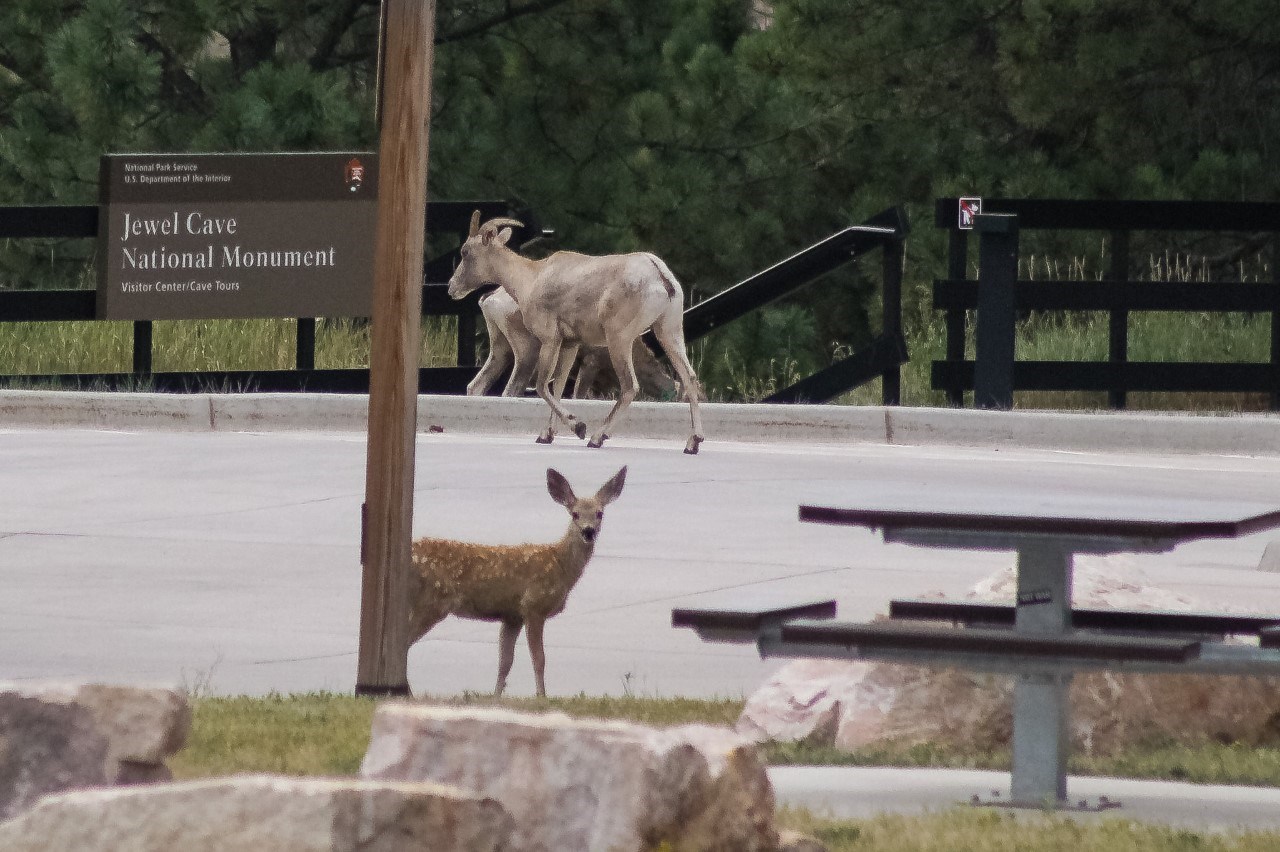
NPS/ Quentin Bucker The surface of Jewel Cave National Monument is home to a variety of mammals that you may be lucky enough to see. White-tailed deer, mule deer, chipmunks and red squirrels are often seen near the Visitor Center. Bighorn sheep, a conservation success story, were reintroduced to nearby Hell Canyon and are occasionally seen near Highway 16 within the monument boundaries. Rocky Mountain elk spend some time in the monument but are quite secretive and rarely seen. Bushy-tailed woodrats, also known as packrats, use the cave near the Historic Entrance as a home and are sometimes seen by visitors on the Lantern Tour. Ungulates (Order artiodactyla)Ungulates are hooved herbivores (plant-eaters), and there are two types: even-toed (artiodactyls) and odd-toed (perissodactyls) . All of the ungulates found living at Jewel Cave National Monument are even-toed, which gives them an advantage on rocky ground and steep hills. Our native ungulates are perfectly adapted to the rocky slopes of the ponderosa pine forest ecosystem. 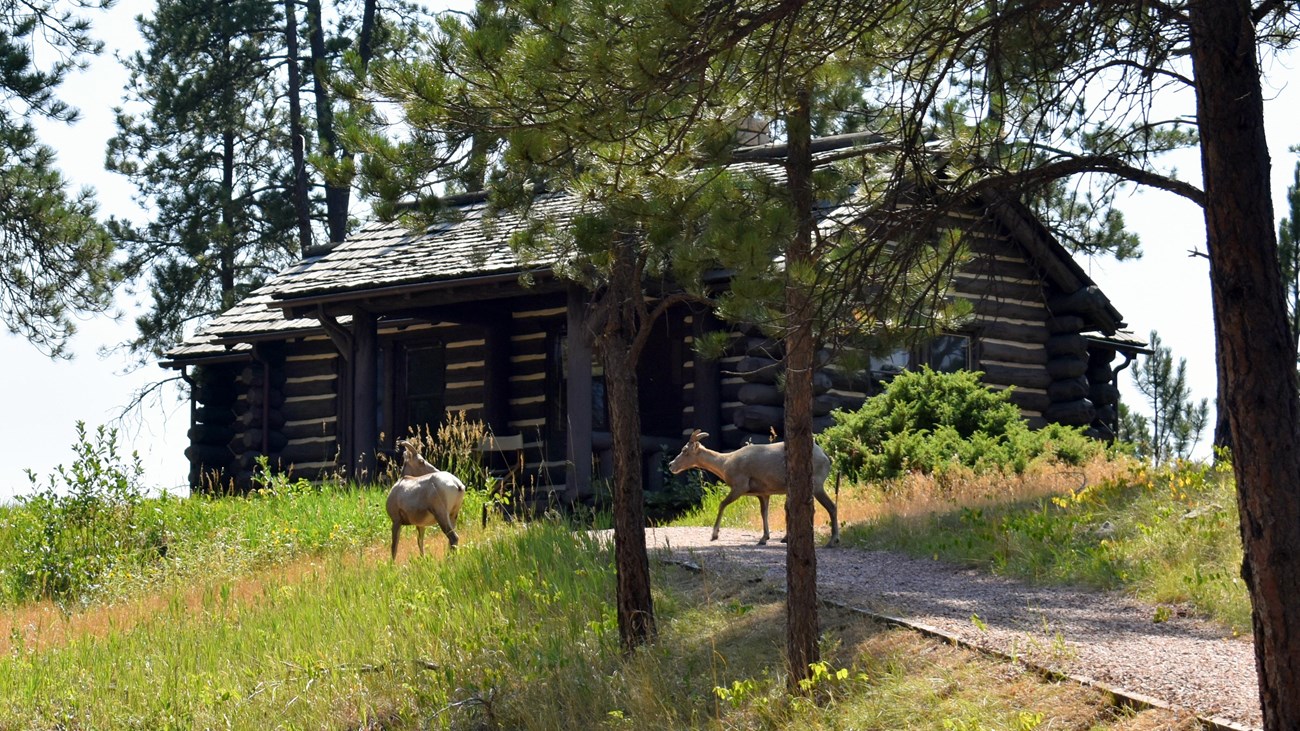
Bighorn Sheep
Bighorn sheep are a common sight around Jewel Cave National Monument, especially at the historic area. 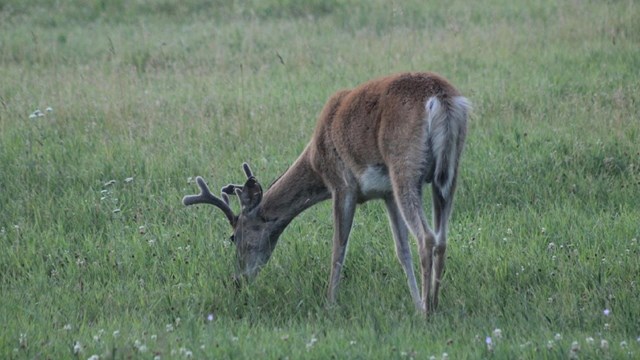
White-tailed Deer
White-tailed deer are commonly seen around the Monument grazing or laying down in a shady spot to beat the mid-day heat. 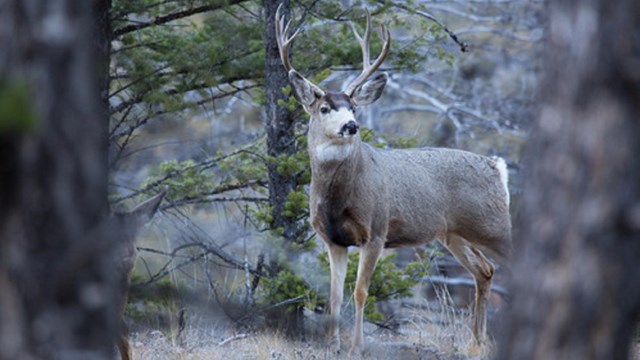
Mule Deer
Mule deer thrive in the rocky hills of Jewel Cave National Monument and are often seen bedded down along the Canyons Trail. 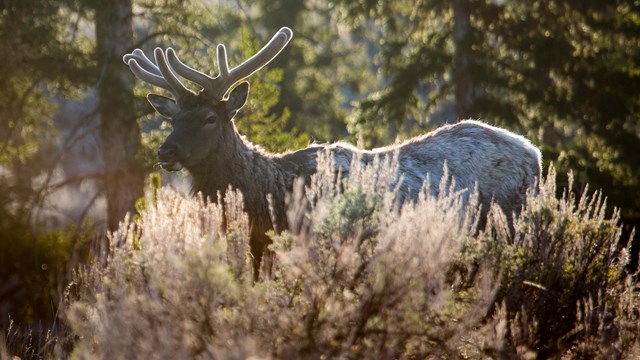
Elk
Elk are rarely seen during the day, however, their tracks and scat are seen all throughout the Canyons trail loop. Carnivores (Order carnivora)Carnivores are an important part of any ecosystem. Jewel Cave National Monument is home to a variety of biomes which host many small mammals, birds and reptiles. Where there are small animals, there are predators. The carnivores at Jewel Cave National Monument help to keep everything in order. Walk on either of our trails, you may see signs that a carnivore has been there too! 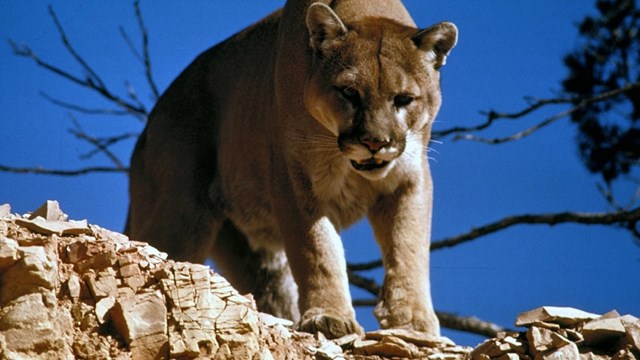
Mountain Lion
Mountain lions are definitely present at Jewel Cave, but are virtually never seen. 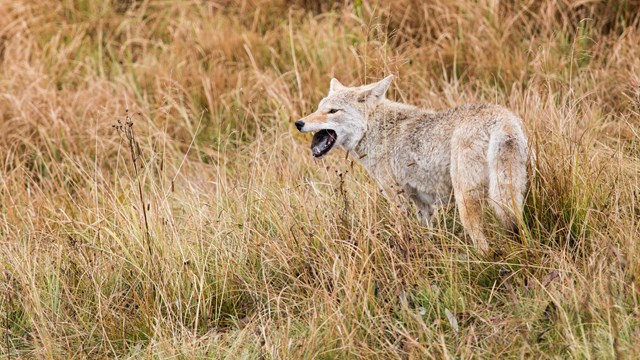
Coyote
Coyotes are the most common carnivore at Jewel Cave National Monument. They are often heard singing as the sun goes down. 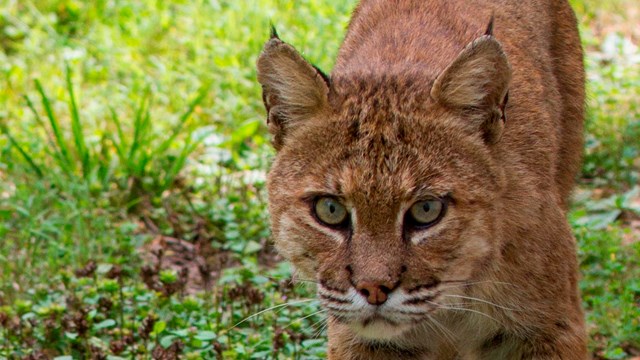
Bobcat
Bobcats are the second feline carnivore at Jewel Cave National Monument. They specialize in rodents and birds and are efficient predators. 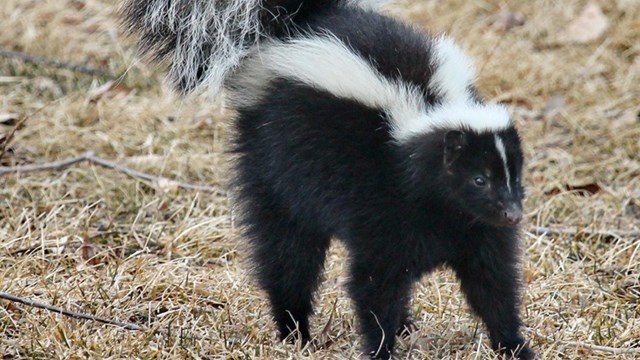
Striped Skunk
Striped skunks are house cat sized carnivores that are seldom seen. If you find one, keep your distance! 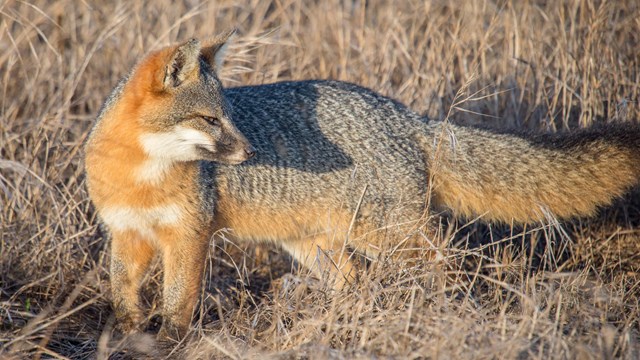
Gray Fox
Gray foxes are small carnivores that hunt birds and small mammals. They are skilled tree climbers and are seldom seen. 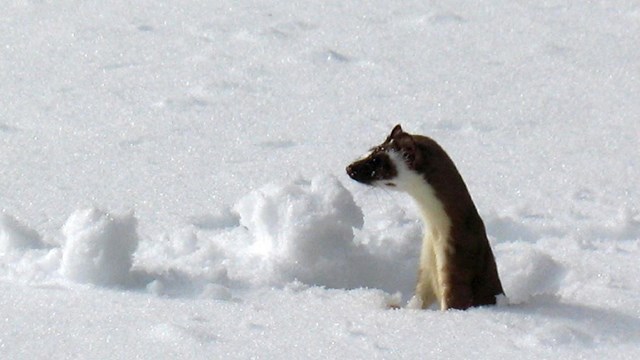
Long-Tailed Weasel
Long-tailed weasels are small carnivores that hunt rats and rabbits throughout Jewel Cave National Monument. Rodents (Order rodentia)Rodents are a vital part of the ecosystems at Jewel Cave National Monument, serving as a major food source for many of the park's predators. Rodents are some of the only occupants of the cave, living inside the natural opening for protection from predators and the elements. In the winter some rodents dig complex tunnel systems through the snow; coyotes, foxes and owls can be seen hunting by sound and diving through thick snow to catch their prey. 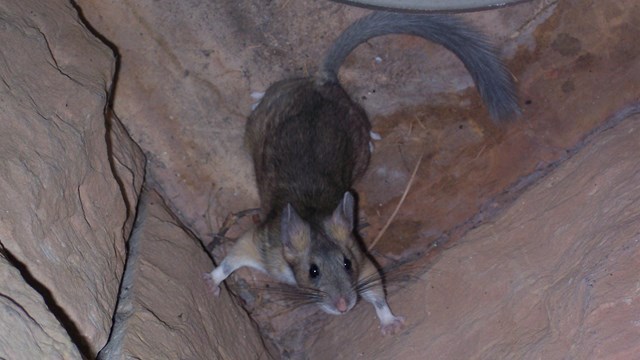
Bushy-tailed woodrat
Also called packrats, these rodents live inside the opening of the cave. 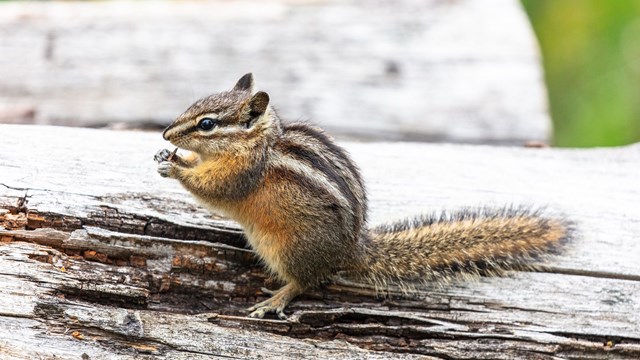
Least Chipmunk
Least chipmunks are commonly seen throughout the Monument and near the visitors center. 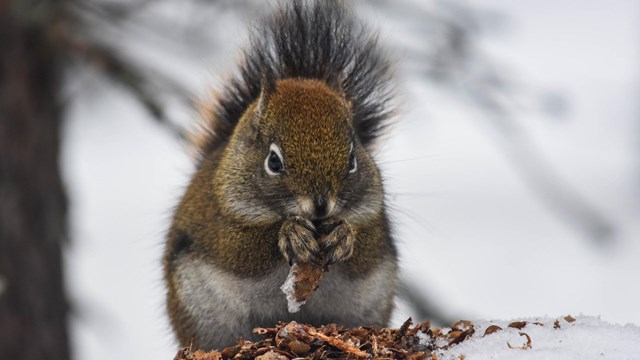
Red Squirrel
Red squirrels are abundant at Jewel Cave National Monument. If you don't see one, you'll probably hear one chattering as you walk by. 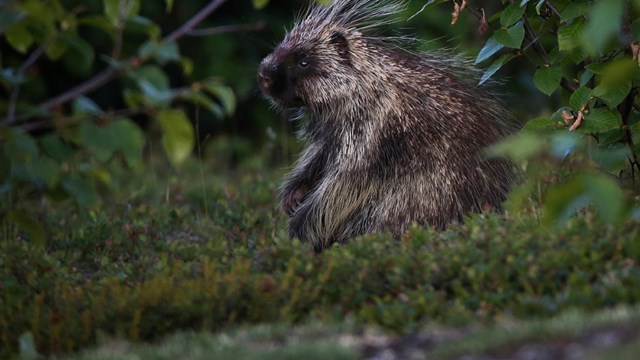
Porcupine
Porcupines are elusive residents and are rarely seen. Keep your eyes in the trees! They spend much of their time safely off the ground. 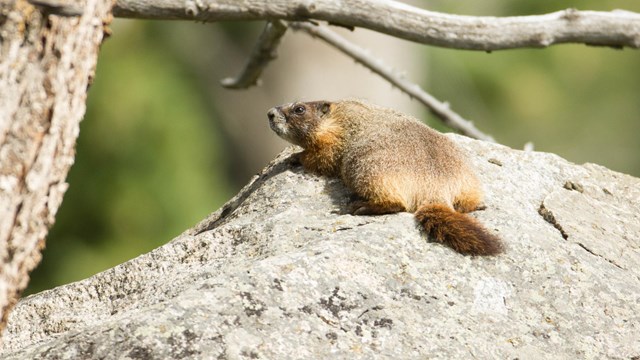
Yellow-bellied Marmot
Yellow-bellied marmots are a medium sized rodent that live in rocky terrain. 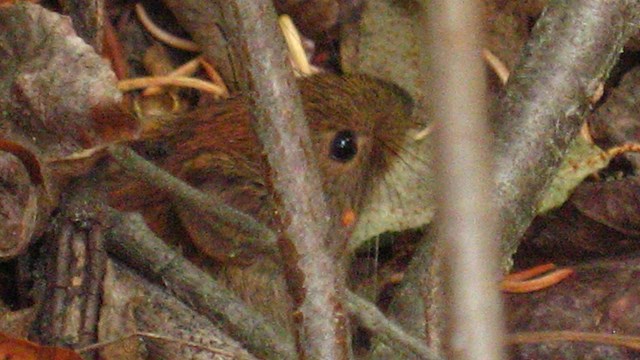
Red-backed Vole
Red-backed voles represent a group of tiny rodents that hold up the ecosystem as prey for birds and carnivores. |
Last updated: February 1, 2024
